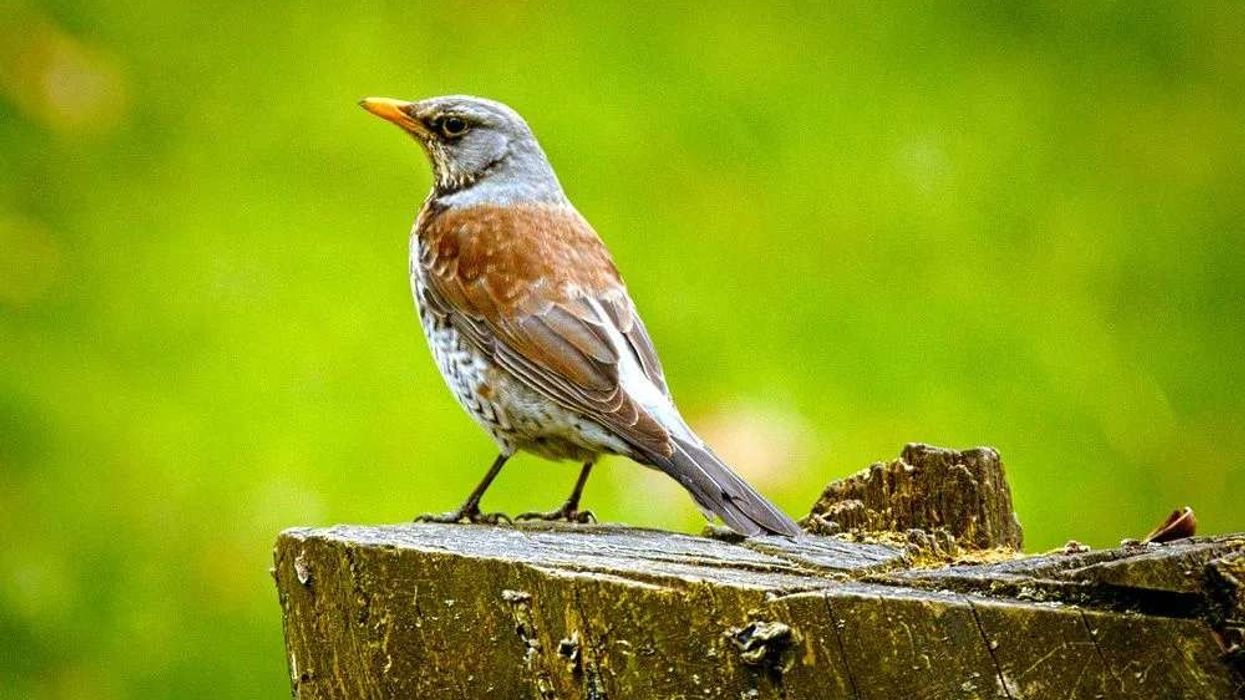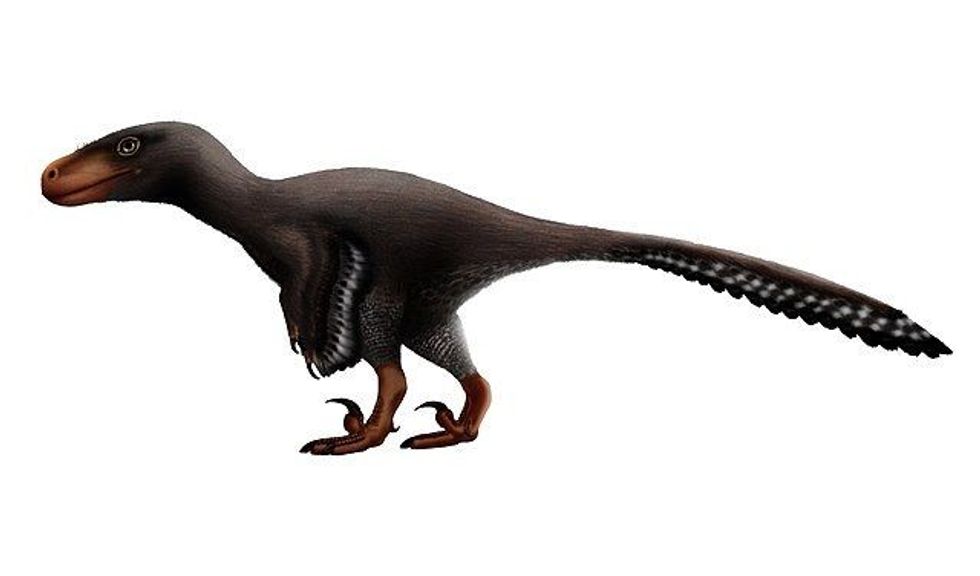The fieldfares are a large species of thrush found widely in the Eurasian regions, which is their winter habitat. They are very sociable in nature, and they flock and migrate in large groups. They like to perch in gardens or orchards when the winter is severe, and it's snowing.
A fieldfare thrush is a melodious bird, and they make different noises in different situations like they have a flight noise, and when they are perched together, they communicate in a soft tone and have a different alarming call when they are threatened.
For more relatable content, check out these swan goose facts and flycatcher facts for kids.
Fieldfare Interesting Facts
What type of animal is a fieldfare?
Fieldfares are a species of thrush, having a brown back with yellow breast with black streaks. They have a dark gray tail, dark wings with white underparts, and a pale gray rump.
What class of animal does a fieldfare belong to?
The fieldfare belongs to the class of Aves.
How many fieldfares are there in the world?
Fieldfares are a species of Eurasian thrush that has a vast distribution in Eurasia, the Mediterranean, and Africa. There are estimated to be around 42-72 million fieldfares in Europe itself, and their global population is estimated to be about 96 million.
Where does a fieldfare live?
The fieldfares mostly dwell in various parts of Southern Europe, Scandinavia, North Africa, and the Mediterranean. This bird is a migratory bird and mostly stays in Europe and Scandinavia in the winter from October and travels to North Africa and the Mediterranean during the summer starting from April.
What is a fieldfare's habitat?
During summer, the fieldfare's habitat range consists of woodlands with mixed trees, marshes, moorland or open tundra, and hills. Their summer migration starts in April. During winter, they migrate to open grasslands or open woodland.
They generally go wherever there is an abundance of berries and insects. They build their nests in woodlands or gardens or among rocks and tend to be in flocks. They built their nest with dried grass leaves, twigs, moss, and mud.
Who do fieldfares live with?
Fieldfares live in small flocks in order to protect themselves from predators.
How long does a fieldfare live?
Their average lifespan is two years.
How do they reproduce?
During the breeding season, they built their nest together both the male and the female breeding pairs, mostly in woodlands. The birds generally prefer to build their nests in the same proximity as their flocks. The adult protects their nest and is pretty aggressive during the breeding season. They lay five to six eggs at one time.
These eggs have brown spots and are speckled pale blue. The females incubate the eggs over a period of 13-14 days. Both the parents take an active part in feeding the birds.
What is their conservation status?
The fieldfare is found in adequate numbers, and their distribution is throughout southern Europe and the Middle East to North Africa. Their conservation status is of Least Concern according to the IUCN.
Fieldfare Fun Facts
What do fieldfares look like?

The fieldfare, Turdus pilaris, is generally known to have a gray crown, neck, head, and rump. They have spotted breasts and flanks and a brown back with dark-colored wings and tail and white underparts.
They have yellow-colored breasts. Both sexes look similar, but the females are dark brown in color. They have pointed wings and round heads.
The males have a bluish-gray crown, black undereye regions, and pale streaks covering the upper part of their eyes. They have a very strong beak which has a slight curve and notch at the tip.
How cute are they?
They are pretty cute as they are fluffy, but they are not that colorful.
How do they communicate?
The male fieldfare has a song-like chattering, and the birds generally make different flight calls which is much softer when they are communicating among themselves and also has alarming calls when they are threatened. They are known for their melodious song and sound.
How big is a fieldfare?
The average length of an adult fieldfare is 9.8 in (25 cm), and their wingspan is 15.3-16.5 in (39-42 cm). They are a bit smaller than mistle thrushes, which are about 10.6-11 in (27-28 cm) in size.
How fast can a fieldfare fly?
The fieldfares generally have a slow and direct flight.
How much does a fieldfare weigh?
The fieldfare weighs around 0.17-0.30 lb (80-140 g).
What are the male and female names of the species?
They don't have any sex-specific names.
What would you call a baby fieldfare?
The fieldfare baby is called a fieldfare chick or a juvenile fieldfare.
What do they eat?
As they are omnivores, the fieldfare has snails, slugs, worms, earthworms, insects like grasshoppers, and also wild berries as their food. During winter, they eat apples, grains, and seeds, and during harsh weather, they move to marshlands to find their food and feed on mollusks.
Are they dangerous?
No, they are not very dangerous, but as they belong to a wildlife species, they can attack when threatened and are especially aggressive during the breeding season.
Would they make a good pet?
They will not make a good pet as they are a part of the wildlife species of thrushes though their song is considered to be a treat for the ears. Also, a major reason not to keep them as pets is that they become very aggressive during the breeding season and might attack.
Did you know...
The fieldfares are similar to mistle thrush in appearance mostly, but the fieldfares are slightly bigger. However, the mistle thrush has a loud call which they sing during rainfall which gives them their name, 'stormcock'.
What does fieldfare mean?
The word fieldfare is derived from old English dating back to the eleventh century. The word fieldfare means 'traveler through field'.
Where do fieldfares migrate from?
The fieldfare is regarded as a migratory species of thrush birds. They migrate mostly to parts of South Europe in winter. They migrate to the Mediterranean regions of North Africa during summer, which starts in April.
Here at Kidadl, we have carefully created lots of interesting family-friendly animal facts for everyone to discover! Learn more about some other birds from our long-tailed duck facts and bean goose fun facts pages.
You can even occupy yourself at home by coloring in one of our free printable Fieldfare coloring pages.









